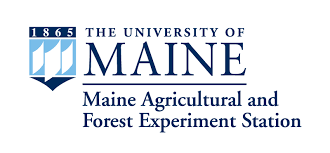Cellulose Nanocomposites Home
Cellulose Nanocomposites
Through research, development, and collaboration, we’re committed to utilizing Cellulose Nanocomposites to strengthen and improve materials while moving toward 100% bio-based materials.
Nanocomposites Processing and Analytical Laboratory
This laboratory contains equipment for producing hybrid blends of polymer melts and liquid suspensions with different functional fillers of nano- to millimeter-scale size and to fabricate samples for material property characterization. Thermal, rheological, static/dynamic-mechanical, and physical properties of polymeric materials can be analyzed in the polymer lab. Surface characterization for wood and polymers can be also performed by measurements of contact angle and inverse gas chromatography. The degree of cure and adhesive properties of thermosetting-polymers can be analyzed using thermal and mechanical properties characterization techniques including dynamic mechanical thermal analysis and differential scanning calorimetry.
Instron 22,000 lb (100kN) Testing Machines
Asylum Research MFP 3D Classic.
Inverse Gas Chromatograph (iGC)
Asylum Research MFP 3D Classic.
Electromechanical Actuator Testing Frame
Instron 5966 (2 kip)
Dynamic Mechanical Analyzer Q800
This machine utilizes state-of-the-art, non-contact, linear drive technology to provide precise control of stress.
Dynamic Scanning Calorimeter Q2000
TA Instrument’s top-of-the-line research-grade DSC with unmatched performance in baseline stability, sensitivity, and resolution.
Intelli-Torque Plasti-Corder
A torque rheometer that utilizes the latest developments in CAN Field Bus Technology.
Universal Temperature/Process Controller
1/4 DIN panel mounted auto-tuning controller that can be used for precise control of single loop with two independent outputs field-configurable as direct-acting reverse acting and 2 alarms.
Gemini II Rheometer
Key technical features include a broad torque range that extends to 200mNm and makes the Gemini suitable for a wide range of applications in research and product development.
Dynisco Melt Flow Indexer
Delivers a wide range of data that includes not only melt index values, but also shear stress, shear rate, viscosity, and apparent melt density, as well as testing conditions.
Athena Mini Spray Dyer B-290
The BUCHI Mini Spray Dryer B-290 is easy to operate and can be used with a small number of materials. It is convenient for investigating many operation conditions.
Malvern Mastersizer 2000
It has a wide range of automated sample dispersion units for the measurement of wet and dry samples. These are controlled through SOPs, providing ease of method development and transfer.
Melvern Morphologi G3s
Measures the size and shape of particles using the technique of static image analysis. Fully automated and with integrated dry sample preparation makes it the ideal replacement for costly and time-consuming manual microscopy measurements.
Hitachi Scanning Electron Microscope TM 3000
Provides variable accelerating voltage, higher beam current, large stage and chamber, and smaller footprint.

Dr. Douglas Gardner
Professor of Sustainable Materials & Technology
Contact Cellulose Nanocomposites
Research Overview
The ASCC is dedicated to studying the properties and applications of nanoscale materials. Our laboratory capabilities include producing hybrid blends of polymer melts and liquid suspensions with different functional fillers of nano-to-millimeter-scale size and to fabricate samples for material property characterization. Thermal, rheological, static/dynamic-mechanical, and physical properties of polymeric materials can be analyzed in the polymer lab. Surface characterization of wood and polymers can be also performed by measurements of contact angle and surface energy inverse gas chromatography. The degree of cure and adhesive properties of thermosetting polymers can be analyzed using thermal and mechanical properties characterization.
The Hub & Spoke Program
The Hub & Spoke Program is a research collaboration between the UMaine and Oak Ridge National Laboratory (ORNL). The partnership advances 3D printing with wood products creating a new market for Maine’s forest products industry, an industry that has been the backbone of Maine’s economy for generations.
UMaine is a world leader in forest-derived cellulose nanofiber (CNF) technology, including nano-and micro-cellulose reinforced thermoplastic composites through its Advanced Structures and Composites Center. ORNL’s Manufacturing Demonstration Facility is the U.S. Department of Energy’s first user facility focused on rapid-scale up and manufacturing R&D. The collaboration enables UMaine researchers to access ORNL’s assets in advanced manufacturing and ORNL researchers to access UMaine’s expertise in CNF technology.
By placing CNF into plastics, strong, sustainable, and cost-effective feedstocks for use in large-scale 3D printers are developed. These materials can be printed at hundreds of pounds per hour by the world’s largest polymer 3D printer, located at the UMaine Advanced Structures and Composites Center. Researchers are working with industry to apply knowledge of large-scale 3D printing with sustainable feedstocks to improve competitiveness and drive U.S. manufacturing to a more sustainable future.



Program Objectives
Traditional feedstocks for 3D printing, or additive manufacturing, tend to be petroleum/fossil-based. As additive manufacturing continues to grow there is a need to identify more sustainable, cost-effective feedstock alternatives.
Nanocellulose is nature’s super polymer. Extracted from cellulose, the basic component of plant cell walls, nanocellulose exhibits a range of properties that make it an attractive and versatile bio-based material. One of the most common forms of nanocellulose is cellulose nanofibrils (CNF).
By placing CNF into plastics, strong, stiff, and recyclable bio-derived material systems can be developed. As a bio-based material, CNF could rival the properties of steel, and its successful incorporation into plastics shows great promise for a renewable feedstock suitable for additive manufacturing. Nanocellulose is helping to build the forest products of the future.
Maine is a natural hub for forest-based innovations and the development of cutting-edge new forest products. Maine is the most heavily forested state in the country by the percentage of land area. Maine’s economy has been deeply rooted in its forests. The University of Maine has pioneered patented cellulose nanofiber production techniques and is home to the only publicly accessible facility in the United States that can manufacture CNF at a rate of one ton per day. Printing with 50% wood promises to open new markets for the forest products industry.
Scientists from Oak Ridge National Laboratory and the University of Maine are conducting fundamental research in several key technical areas, including CNF production, drying, functionalization, compounding with thermoplastics, multiscale modeling, and life-cycle analysis.
UMaine is a world leader in forest-derived cellulose nano fiber (CNF) technology, including nano-and micro-cellulose reinforced thermoplastic composites through its Advanced Structures and Composites Center. ORNL is the U.S. Department of Energy’s first user facility focused on rapid-scale up and manufacturing R&D. The collaboration enables UMaine researchers to access ORNL’s assets in advanced manufacturing and ORNL researchers to access UMaine’s expertise in CNF technology.
By placing CNF into plastics, strong, sustainable, and cost-effective feedstocks for use in large-scale 3D printers are developed. These materials can be printed at hundreds of pounds per hour by the world’s largest polymer 3D printer, located at the UMaine Advanced Structures and Composites Center. Researchers are working with industry to apply knowledge of large-scale 3D printing with sustainable feedstocks to improve competitiveness and drive U.S. manufacturing to a more sustainable future.
Maine Agricultural and Forest Experiment Station (MAFES)
Forest-based cellulose is among the most abundant renewable polymer resources on earth and constitutes Maine’s largest natural resource. Cellulose-derived polymer nanocomposite materials from Maine’s forests are extremely promising materials that can provide the next generation of lightweight, renewable materials for a variety of applications including construction, automotive, defense, consumer products, and coatings.

Structural and Defense Applications
A partnership between ASCC and the U.S. Army Engineer Research and Development Center (ERDC) was formed to develop next-generation bio-based materials such as low-cost nano-cellulose- and micro cellulose-reinforced thermoplastic formulations.

CAREER
OPPORTUNITIES
LEARN MORE ABOUT THE EXCITING OPPORTUNITIES AT THE ASCC

